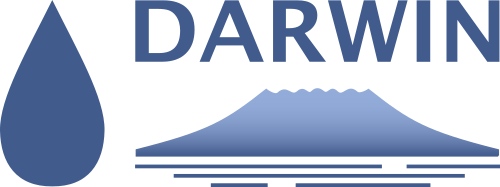Technology Transfer Project: Operational rainfall monitoring in southern Ecuador [funded by DFG]
Project staff:
Prof. Dr. Jörg Bendix
PD Dr. Rütger Rollenbeck
Abstract:
A technology based on a low cost weather radar (LAWR) blended with rain gauge information has been developed in the DFG RU816, applicable for the spatio-temporal monitoring of precipitation. This technology has been developed towards a prototype rain monitoring system (radar network) for the whole country. Within this transfer project, a prototype network has been installed in southern Ecuador to show its usefulness for an operational national system. Regarding further applied research activities, the novelty is the implementation of the developed technique in an operational web-based information system for different usere communities. The prototype implementation warrants particularly continuity for German basic research in the area of southern Ecuador. In a collaborative research project, a monitoring platform for environmental change impacts on functional biodiversity and ecosystem services is scientifically defined and established. The proposed radar network contributes important data to this research program. This will enable continuous monitoring of atmospheric water resources the assessment of potential ecosystem services and help to improve watershed management, the use of potable water and hydro power generation. (further information on the official project website:http://www.radarnetsur.gob.ec)
Description:
The Network of three X-band single polarization instruments is operational since January 2015 and covers all of South Ecuador, from the coastal plain near Gauyaquil down to the peruvian border and also significant parts of the eastern Andean escarpment.Rain fall distribution is moitored each 5 minutes at a spatial resolution of 500 x 500 m. The data products are publicly available and are evaluated scientifically to
- Derive a regional precipitation climatology
- Analyse dynamic processes of rain fall formation
- Enable precise assessment of the precipitation input to the watersheds covered
- Identify areas of precipitation related hazards like inundations and landslides
- Support decision making in land use planning and hydrological management
- Support management of Hydropower plants and potable water supply
- Supply information to the public for health, safety, tourism and event planning
- Alert the public and relevant administrations of imminent precipitation extremes
- Support traffic planning and management (roads, airports)

Example of extreme precipitation monitored by the radar network on the 25. of March 2015

Radar sites GUAXX (upper left, near Celica), processing unit (upper right), LOXX (near Loja, lower left and CAXX (near Cuenca at 4500 m, lower right)
Publications and poster presentations:
2022 - Rollenbeck, R.; Orellana-Alvear, J.; Bendix, J.; Rodriguez, R.; Pucha-Cofrep, F.; Guallpa, M.; Fries, A. & Celleri, R. (2022): The Coastal El Niño Event of 2017 in Ecuador and Peru: A Weather Radar Analysis. Remote Sensing 14(4), 824.
2021 - Sokol, Z.; Szturc, J.; Orellana-Alvear, J.; Popová, J.; Jurczyk, A. & Celleri, R. (2021): The role of weather radar in rainfall estimation and its application in meteorological and hydrological modelling—A Review. Remote Sensing 13(3), 351.
2020 - Muenchow, J.; Dieker, P.; Böttcher, T.; Brock, J.; Didenko, G.; Fremout, T.; Jakubka, D.; Jentsch, A.; Nüst, D.; Richter, M.; Rodriguez, E.F.; Rodriguez, R.; Rollenbeck, R.; Salazar Zarsosa, P.; Schratz, P. & Brenning, A. (2020): Monitoring and predictive mapping of floristic biodiversity along a climatic gradient in ENSO's terrestrial core region, NW Peru. Ecography 43(12), 1878--1890.
2019 - Rodriguez, R.; Mabres, A.; Cruz, G.; La Madrid, R.; Rollenbeck, R.; Scipion, D. & Silva, Y. (2019): Radar de lluvias en Piura para observar El Niño. BOLETÍN TÉCNICO 4(6), 9-12.
- Orellana-Alvear, J.; Celleri, R.; Rollenbeck, R. & Bendix, J. (2019): Optimization of X-Band Radar Rainfall Retrieval in the Southern Andes of Ecuador Using a Random Forest Model. Remote Sensing 11(14), 1632.
2017 - Bendix, J.; Fries, A.; Zarate, J.; Trachte, K.; Rollenbeck, R.; Pucha-Cofrep, F.; Paladines, R.; Palacios, I.; Orellana Alvear, J.; Oñate-Valdivieso, F.; Naranjo, C.; Mendoza, L.; Mejia, D.; Guallpa, M.; Gordillo, F.; Gonzalez-Jaramillo, V.; Dobbermann, M.; Celleri, R.; Carillo, C.; Araque, A. & Achilles, S. (2017): Radarnet Sur – first weather radar network in tropical high mountains. Bulletin of the American Meteorological Society 98(6), 1235-1254.
- Oñate-Valdivieso, F.; Fries, A.; Mendoza, K.; Gonzalez-Jaramillo, V.; Pucha-Cofrep, F.; Rollenbeck, R. & Bendix, J. (2017): Temporal and spatial analysis of precipitation patterns in an Andean region of southern Ecuador using LAWR weather radar. Meteorol. Atmos. Phys. 2017, 1-12.




